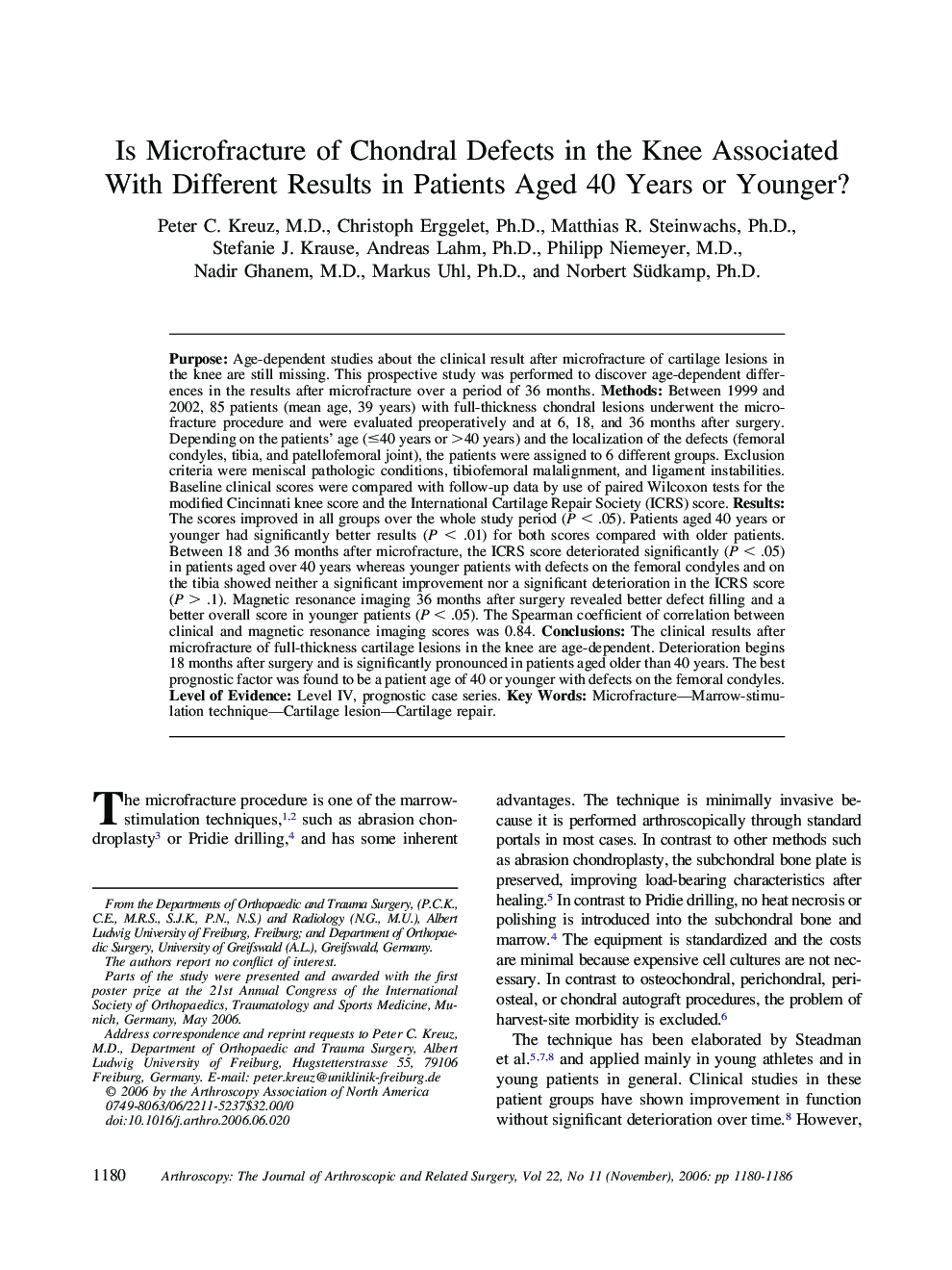| کد مقاله | کد نشریه | سال انتشار | مقاله انگلیسی | نسخه تمام متن |
|---|---|---|---|---|
| 4047062 | 1603604 | 2006 | 7 صفحه PDF | دانلود رایگان |

Purpose: Age-dependent studies about the clinical result after microfracture of cartilage lesions in the knee are still missing. This prospective study was performed to discover age-dependent differences in the results after microfracture over a period of 36 months. Methods: Between 1999 and 2002, 85 patients (mean age, 39 years) with full-thickness chondral lesions underwent the microfracture procedure and were evaluated preoperatively and at 6, 18, and 36 months after surgery. Depending on the patients’ age (≤40 years or >40 years) and the localization of the defects (femoral condyles, tibia, and patellofemoral joint), the patients were assigned to 6 different groups. Exclusion criteria were meniscal pathologic conditions, tibiofemoral malalignment, and ligament instabilities. Baseline clinical scores were compared with follow-up data by use of paired Wilcoxon tests for the modified Cincinnati knee score and the International Cartilage Repair Society (ICRS) score. Results: The scores improved in all groups over the whole study period (P < .05). Patients aged 40 years or younger had significantly better results (P < .01) for both scores compared with older patients. Between 18 and 36 months after microfracture, the ICRS score deteriorated significantly (P < .05) in patients aged over 40 years whereas younger patients with defects on the femoral condyles and on the tibia showed neither a significant improvement nor a significant deterioration in the ICRS score (P > .1). Magnetic resonance imaging 36 months after surgery revealed better defect filling and a better overall score in younger patients (P < .05). The Spearman coefficient of correlation between clinical and magnetic resonance imaging scores was 0.84. Conclusions: The clinical results after microfracture of full-thickness cartilage lesions in the knee are age-dependent. Deterioration begins 18 months after surgery and is significantly pronounced in patients aged older than 40 years. The best prognostic factor was found to be a patient age of 40 or younger with defects on the femoral condyles. Level of Evidence: Level IV, prognostic case series.
Journal: Arthroscopy: The Journal of Arthroscopic & Related Surgery - Volume 22, Issue 11, November 2006, Pages 1180–1186